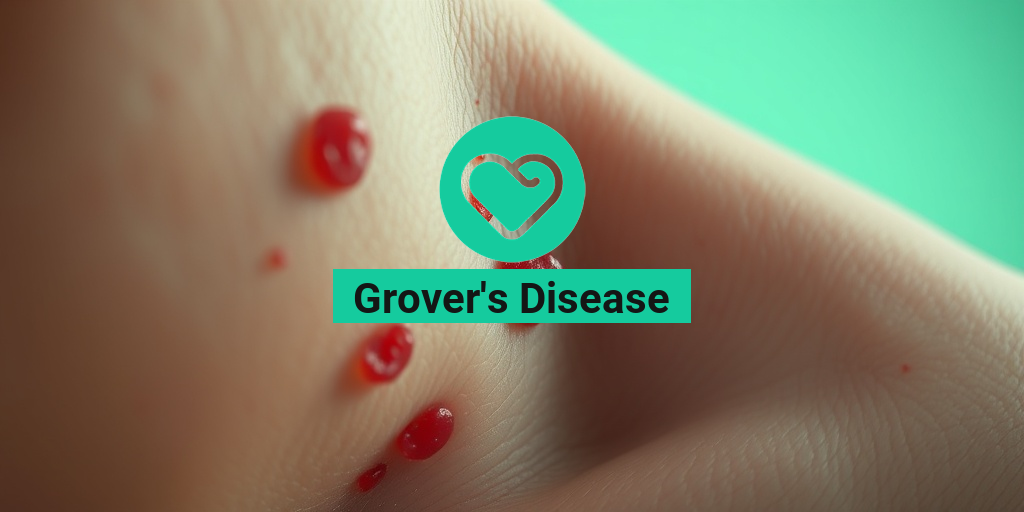What Is an Undescended Testicle?
An undescended testicle, also known as cryptorchidism, is a condition where one or both of the testicles fail to move down into the scrotum before birth. Typically, testicles develop in the abdomen of a fetus and descend into the scrotum during the last few months of pregnancy. However, in some cases, this process does not occur, leading to an undescended testicle. This condition is relatively common, affecting about 3% of full-term male infants and up to 30% of premature infants.
Causes of Undescended Testicle
The exact cause of an undescended testicle is often unknown, but several factors may contribute to this condition:
- Genetic Factors: Family history of undescended testicles can increase the likelihood of this condition.
- Hormonal Issues: Hormonal imbalances during pregnancy may affect the descent of the testicles.
- Premature Birth: Babies born prematurely are at a higher risk of having undescended testicles.
- Low Birth Weight: Infants with low birth weight may also be more susceptible.
Types of Undescended Testicles
There are two main types of undescended testicles:
- Palpable Testicle: This type can be felt in the groin or abdomen during a physical examination.
- Non-Palpable Testicle: This type cannot be felt and may require imaging tests, such as an ultrasound, to locate it.
Symptoms of Undescended Testicle
In many cases, an undescended testicle may not present any noticeable symptoms, especially in newborns. However, as the child grows, certain signs may become apparent. Here are some common symptoms to look out for:
Physical Examination Findings
During a routine physical examination, a healthcare provider may notice:
- Absence of One or Both Testicles: The most obvious sign is the absence of one or both testicles in the scrotum.
- Swelling or Bulging: There may be swelling or a bulge in the groin area where the testicle may be located.
Potential Complications
If left untreated, an undescended testicle can lead to several complications, including:
- Infertility: The higher temperature in the abdomen can affect sperm production and lead to infertility issues later in life.
- Testicular Cancer: There is an increased risk of testicular cancer in men with a history of undescended testicles.
- Hernia: An undescended testicle can increase the risk of developing a hernia.
When to Seek Medical Attention
If you notice any signs of an undescended testicle in your child, it is crucial to consult a healthcare provider. Early diagnosis and treatment can significantly reduce the risk of complications. In some cases, surgery may be required to position the testicle correctly in the scrotum, especially if the child is older than six months.
For adults who may have had an undescended testicle in childhood, it’s essential to monitor for any symptoms or complications, such as pain or swelling in the groin area. If you experience any concerning symptoms, don’t hesitate to reach out to a healthcare professional.
For more information on undescended testicles and related health topics, consider visiting Yesil Health AI, a valuable resource for evidence-based health answers.
Understanding the implications of an undescended testicle is vital for both parents and individuals affected by this condition. Early intervention can lead to better health outcomes and peace of mind. 🌟

Causes of Undescended Testicle
An undescended testicle, also known as cryptorchidism, occurs when one or both testicles fail to move down into the scrotum before birth. Understanding the causes of this condition is crucial for parents and caregivers. Here are some of the primary factors that contribute to undescended testicles:
Genetic Factors
Genetics play a significant role in the development of undescended testicles. If there is a family history of this condition, the likelihood of occurrence increases. Certain genetic syndromes, such as Down syndrome or Klinefelter syndrome, can also be associated with undescended testicles.
Hormonal Influences
During fetal development, hormones are responsible for the descent of the testicles. Any disruption in hormonal levels, particularly testosterone, can lead to undescended testicles. This hormonal imbalance can be due to various factors, including maternal health issues during pregnancy.
Prematurity and Low Birth Weight
Babies born prematurely or with low birth weight are at a higher risk of having undescended testicles. The testicles typically descend during the last few months of pregnancy, so if a baby is born early, there may not be enough time for this process to occur.
Environmental Factors
Exposure to certain environmental factors during pregnancy may also contribute to the risk of undescended testicles. For instance, exposure to endocrine-disrupting chemicals, such as pesticides and plastics, has been linked to reproductive health issues in newborns.
Maternal Health Conditions
Maternal health conditions, such as diabetes or obesity, can increase the risk of undescended testicles in newborns. These conditions may affect hormone levels and fetal development, leading to complications during the descent of the testicles.
Risk Factors for Undescended Testicle
While the exact cause of an undescended testicle can vary, several risk factors can increase the likelihood of this condition. Understanding these risk factors can help in early detection and intervention:
Family History
A family history of undescended testicles significantly raises the risk for newborns. If a sibling or parent had this condition, it’s essential to monitor the child closely for any signs of undescended testicles.
Gestational Age
As mentioned earlier, babies born prematurely are at a higher risk. The earlier a baby is born, the less likely the testicles will have descended into the scrotum. This is particularly true for infants born before 34 weeks of gestation.
Low Birth Weight
Low birth weight is another critical risk factor. Babies weighing less than 5.5 pounds (2.5 kg) at birth are more likely to experience undescended testicles. This is often seen in premature infants but can also occur in full-term babies with low birth weight.
Multiple Births
Twins or higher-order multiples are at an increased risk of having undescended testicles. The shared environment in the womb can lead to complications that affect the development of each fetus, including the descent of the testicles.
Maternal Factors
Maternal health issues, such as obesity, diabetes, or smoking during pregnancy, can also contribute to the risk of undescended testicles. These factors can affect fetal development and hormone levels, leading to complications.
Ethnicity
Research indicates that certain ethnic groups may have a higher prevalence of undescended testicles. For example, studies suggest that Caucasian boys are more likely to be affected compared to boys of African or Asian descent.
In summary, understanding the causes and risk factors associated with undescended testicles is vital for early diagnosis and treatment. If you suspect your child may have this condition, consult a healthcare professional for guidance and support. 🩺

Diagnosis of Undescended Testicle
Diagnosing an undescended testicle, also known as cryptorchidism, is a crucial step in ensuring the health and well-being of affected individuals. This condition occurs when one or both testicles fail to descend into the scrotum before birth. Early diagnosis is essential, as it can lead to complications if left untreated.
Physical Examination
The primary method for diagnosing an undescended testicle is through a thorough physical examination. Pediatricians or urologists typically perform this examination during routine check-ups. They will:
- Check the scrotum for the presence of one or both testicles.
- Palpate the groin area to locate any testicles that may be undescended.
- Assess the size and consistency of the testicles.
In many cases, the testicle may be found in the inguinal canal or may not be palpable at all. If the testicle is not located, further diagnostic tests may be necessary.
Imaging Tests
If the physical examination does not yield conclusive results, doctors may recommend imaging tests such as:
- Ultrasound: This non-invasive test uses sound waves to create images of the scrotum and groin area, helping to locate the undescended testicle.
- MRI: In rare cases, an MRI may be used to provide more detailed images if the ultrasound is inconclusive.
These imaging tests can help determine the location of the testicle and assess any potential complications.
Age Considerations
It’s important to note that undescended testicles are most commonly diagnosed in newborns. However, some cases may not be identified until later in childhood or even adulthood. For instance, an undescended testicle at age 13 or age 30 can still occur, and individuals should seek medical advice if they suspect they have this condition.
Complications of Undescended Testicle
While many cases of undescended testicles can be successfully treated, there are potential complications that can arise if the condition is left unaddressed. Understanding these complications is vital for both patients and caregivers.
Infertility Risks
One of the most significant concerns associated with undescended testicles is the risk of infertility. The testicles need to be located in the cooler environment of the scrotum to produce healthy sperm. If a testicle remains undescended, it may lead to:
- Reduced sperm production: Higher temperatures in the abdomen can impair sperm development.
- Testicular atrophy: The undescended testicle may shrink and become non-functional over time.
Increased Cancer Risk
Men with a history of undescended testicles have a higher risk of developing testicular cancer later in life. The risk is particularly pronounced if the condition is not corrected early. Regular self-examinations and medical check-ups are essential for early detection of any abnormalities.
Hernia Development
Another complication that can arise from undescended testicles is the development of an inguinal hernia. This occurs when abdominal contents protrude through a weak spot in the groin. Symptoms may include:
- A noticeable bulge in the groin area.
- Pain or discomfort, especially when lifting or straining.
Hernias can require surgical intervention, adding to the complexity of treatment for undescended testicles.
Psychosocial Impact
Beyond physical complications, there can also be psychosocial effects associated with undescended testicles. Individuals may experience:
- Body image issues: Concerns about physical appearance can lead to low self-esteem.
- Social anxiety: Fear of judgment or bullying can affect social interactions.
Addressing these concerns through counseling and support can be beneficial for affected individuals.
In conclusion, early diagnosis and treatment of undescended testicles are crucial to prevent complications such as infertility, cancer, hernias, and psychosocial issues. If you suspect you or someone you know may have this condition, seeking medical advice is essential. 🩺

Treatment Options for Undescended Testicle
An undescended testicle, also known as cryptorchidism, is a condition where one or both testicles fail to descend into the scrotum before birth. This condition is relatively common, affecting about 3% of full-term male infants. Fortunately, there are several effective treatment options available to address this issue.
Observation and Monitoring
In many cases, especially for newborns, doctors may recommend a period of observation. This is because some undescended testicles may descend on their own within the first few months of life. Regular check-ups will help monitor the situation, and if the testicle has not descended by the time the child is six months old, further intervention may be necessary.
Surgical Intervention
If the testicle does not descend naturally, surgery is often the next step. The procedure, known as orchidopexy, typically involves the following:
- Timing: Surgery is usually performed between 6 months and 18 months of age.
- Procedure: The surgeon makes a small incision in the groin or abdomen to locate the undescended testicle and bring it down into the scrotum.
- Recovery: Most children recover quickly, with minimal discomfort and a return to normal activities within a few days.
Hormonal Treatment
In some cases, hormonal therapy may be considered as an alternative to surgery. Hormones such as human chorionic gonadotropin (hCG) can stimulate the testicles to descend. However, this approach is less common and is typically reserved for specific situations.
Post-Surgery Considerations
After surgery, follow-up appointments are crucial to ensure that the testicle remains in the correct position and to monitor for any potential complications. Parents should watch for signs of infection, swelling, or unusual pain in the area.
Preventive Measures and Outlook
While there are no guaranteed ways to prevent an undescended testicle, understanding the risk factors can help in managing the condition effectively. Here are some preventive measures and insights into the outlook for affected individuals:
Understanding Risk Factors
Several factors may increase the likelihood of a child being born with an undescended testicle:
- Premature Birth: Babies born prematurely are at a higher risk.
- Low Birth Weight: Infants with a low birth weight may also be more susceptible.
- Family History: A family history of undescended testicles can increase risk.
Regular Check-Ups
Regular pediatric check-ups are essential for early detection and intervention. Parents should discuss any concerns with their child’s doctor, especially if there is a family history of the condition.
Long-Term Outlook
The long-term outlook for children with an undescended testicle is generally positive, especially when treated early. Most boys who undergo surgery will have normal testicular function and fertility later in life. However, untreated cases may lead to complications such as:
- Infertility: The risk of infertility increases if the condition is not addressed.
- Testicular Cancer: There is a slightly higher risk of developing testicular cancer in undescended testicles.
- Hernia: There is also an increased risk of inguinal hernias.
In conclusion, while an undescended testicle can be a concerning condition, effective treatment options and preventive measures can lead to a positive outcome. Early intervention and regular monitoring are key to ensuring the best possible health for affected individuals. 🌟

Frequently Asked Questions about Undescended Testicle
What is an Undescended Testicle?
An undescended testicle is a condition where one or both testicles fail to move down into the scrotum before birth. This condition is also known as cryptorchidism and is more common in premature infants.
What are the symptoms of an Undescended Testicle?
The primary symptom of an undescended testicle is the absence of one or both testicles in the scrotum. In some cases, the testicle may be located in the abdomen or groin area. There are typically no other symptoms, but complications can arise if left untreated.
How is an Undescended Testicle diagnosed?
Diagnosis usually involves a physical examination by a healthcare provider. In some cases, imaging tests like an ultrasound may be used to locate the testicle if it is not palpable during the examination.
What are the treatment options for an Undescended Testicle?
The most common treatment for an undescended testicle is surgery, known as orchidopexy, which is typically performed when the child is between 6 months and 18 months old. This procedure involves moving the testicle into the scrotum and securing it in place.
Can an Undescended Testicle affect fertility?
Yes, if not treated, an undescended testicle can lead to fertility issues later in life. The higher temperature in the abdomen can affect sperm production and quality. Early intervention is crucial to minimize these risks.
Is it possible for adults to have an Undescended Testicle?
Yes, while undescended testicles are typically diagnosed in infancy, some men may not discover they have this condition until adulthood. In such cases, surgical intervention may still be recommended.
What are the risks of surgery for an Undescended Testicle?
As with any surgical procedure, there are risks involved, including infection, bleeding, and potential damage to surrounding structures. However, the benefits of correcting an undescended testicle usually outweigh these risks.
Can dogs have an Undescended Testicle?
Yes, undescended testicles can occur in dogs as well. This condition is similar to that in humans and can lead to health issues if not addressed. Pet owners should consult a veterinarian for proper diagnosis and treatment options.
What is the ICD-10 code for an Undescended Testicle?
The ICD-10 code for an undescended testicle is Q53. This code is used for medical billing and documentation purposes.
What does it mean if an Undescended Testicle is found in a newborn?
Finding an undescended testicle in a newborn is not uncommon. In many cases, the testicle may descend on its own within the first few months of life. However, if it does not, medical evaluation and potential treatment may be necessary.
What should I do if I suspect my child has an Undescended Testicle?
If you suspect your child has an undescended testicle, it is important to consult a pediatrician or a urologist. Early diagnosis and treatment can help prevent complications and ensure proper development.




